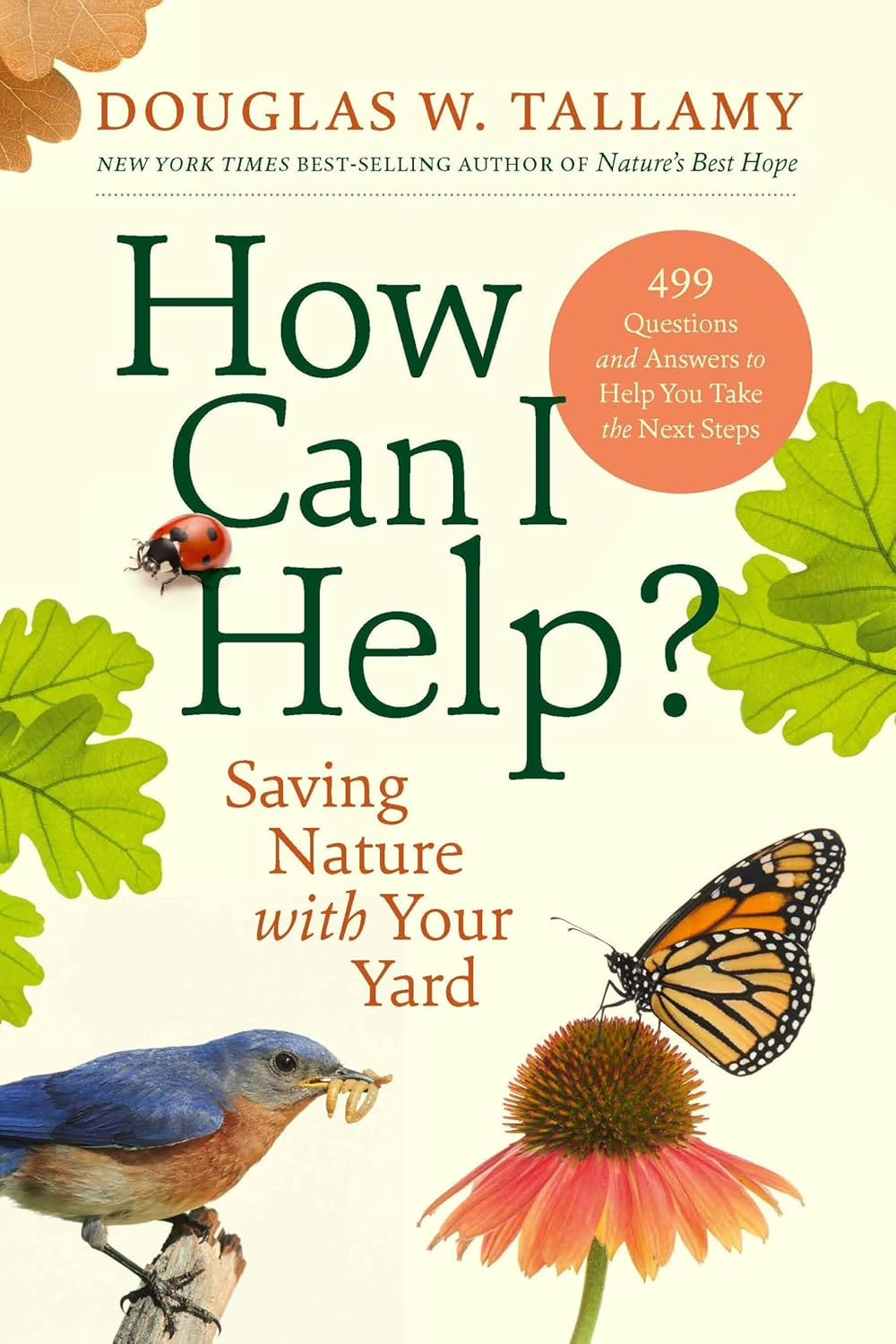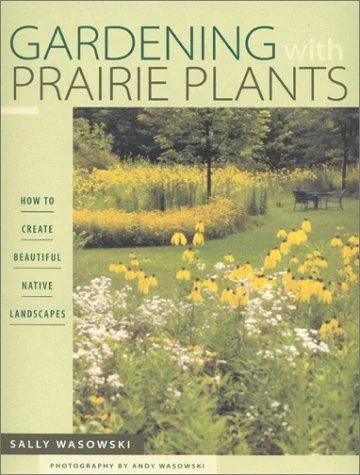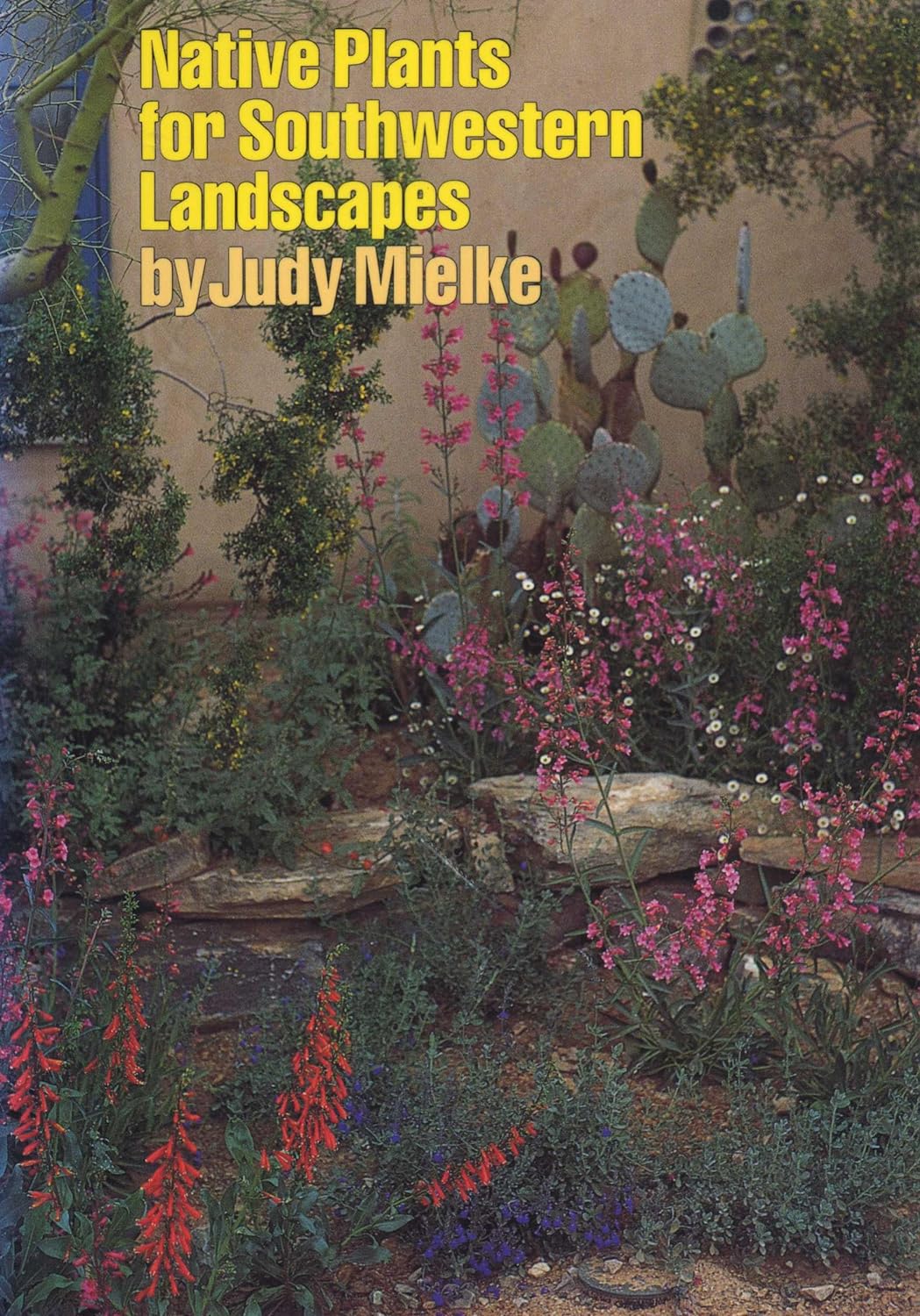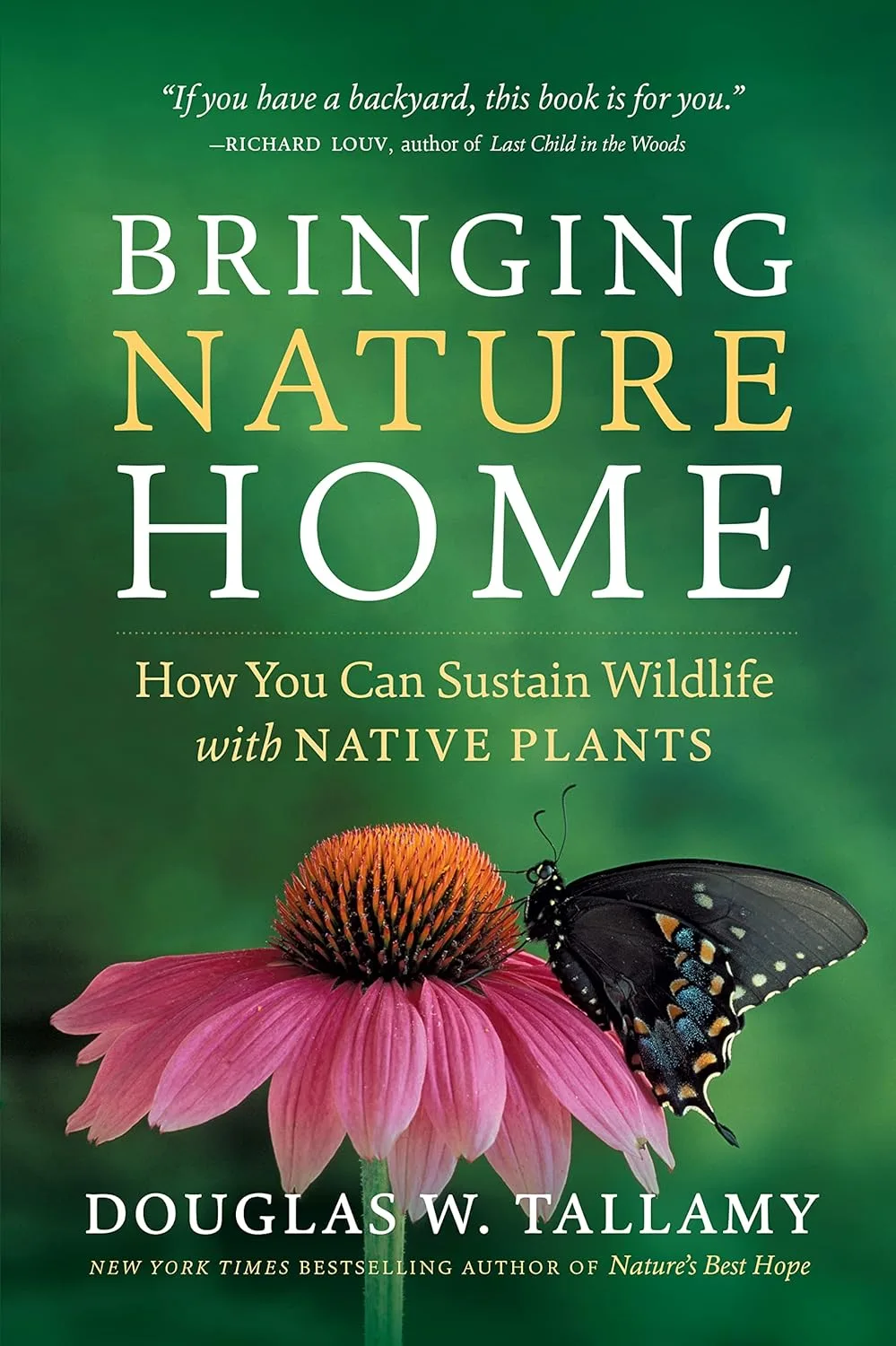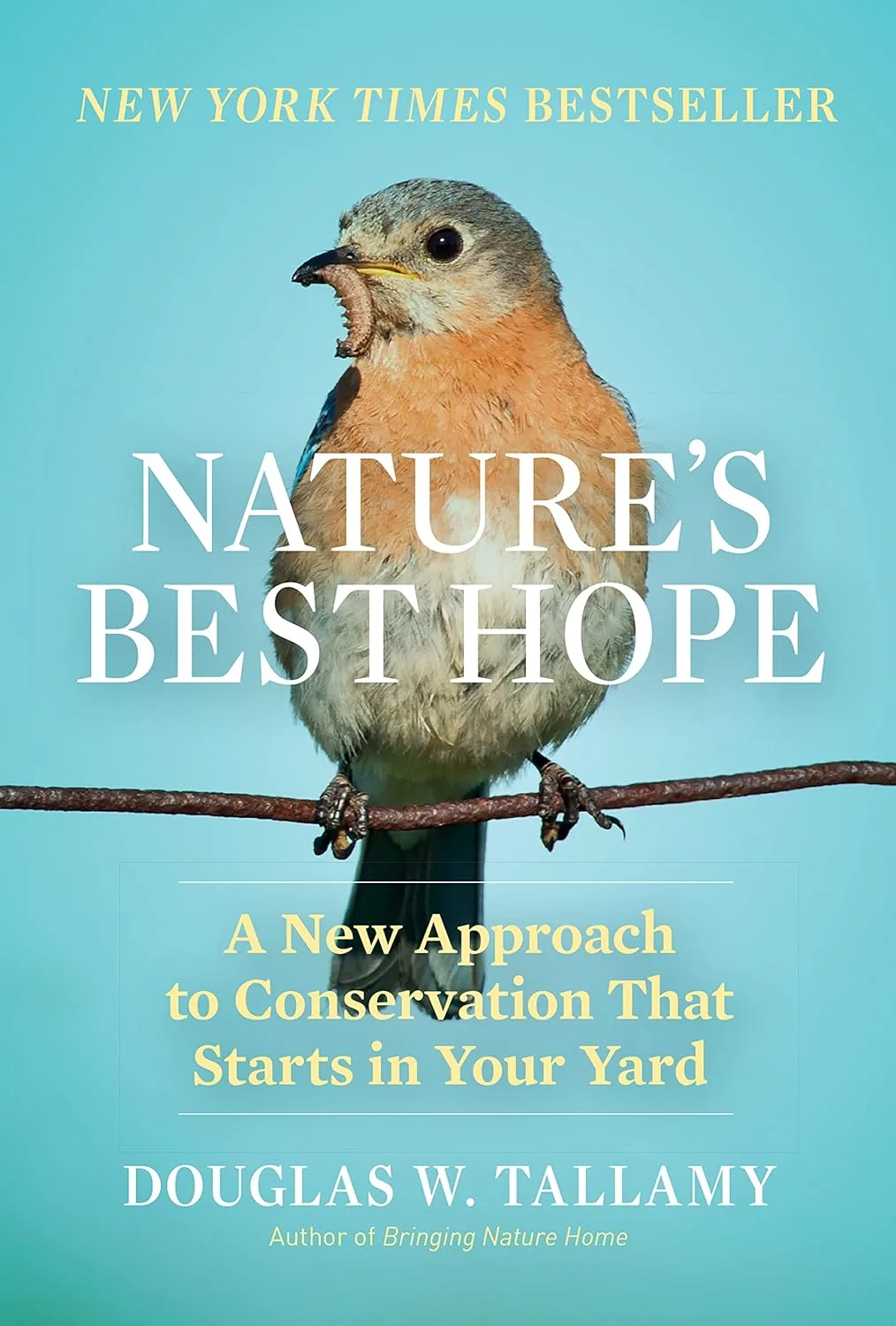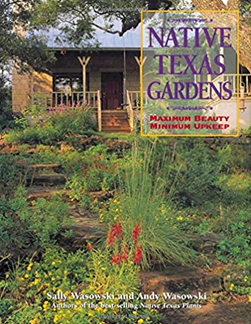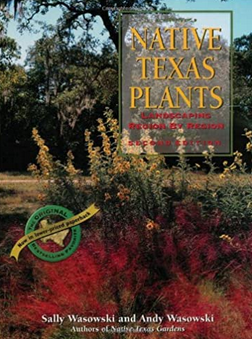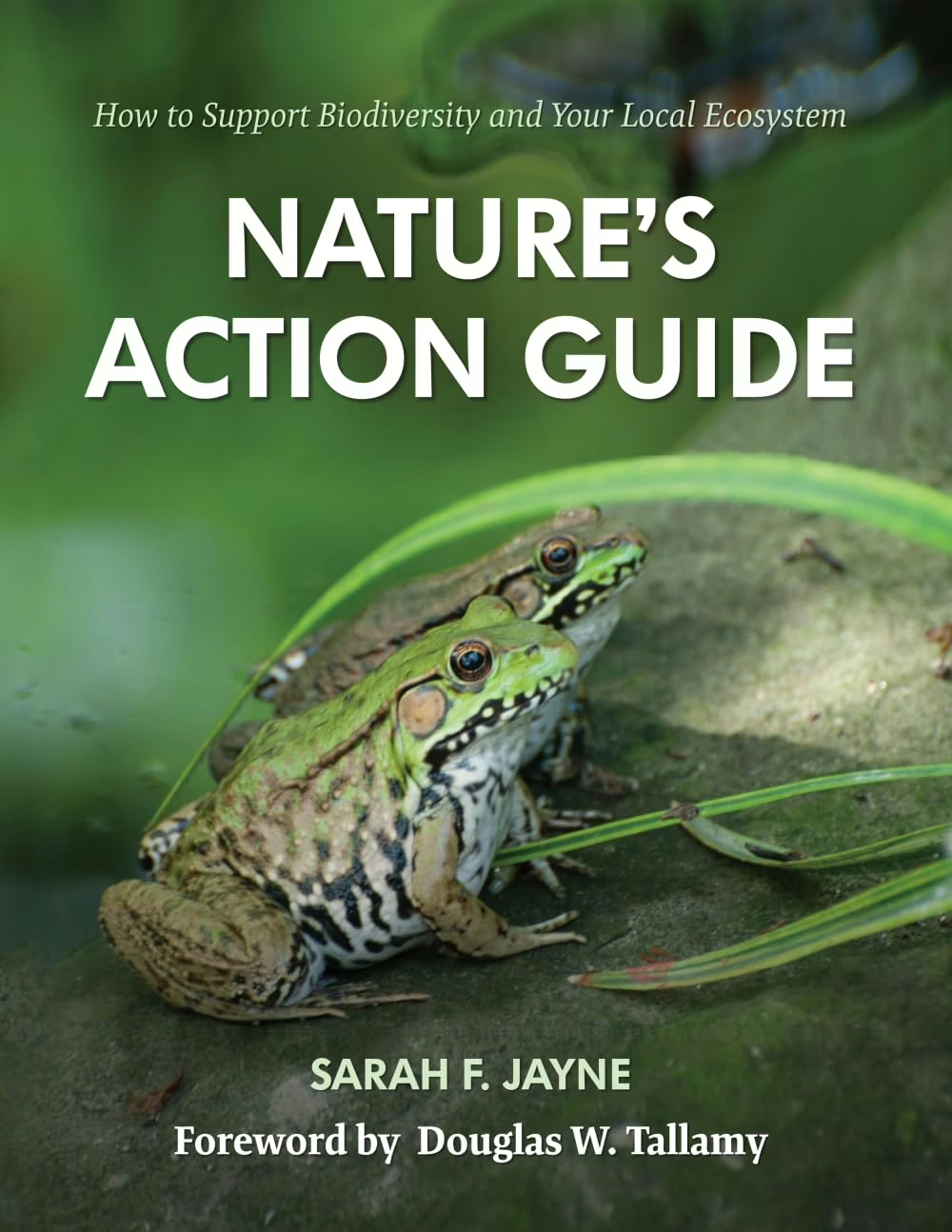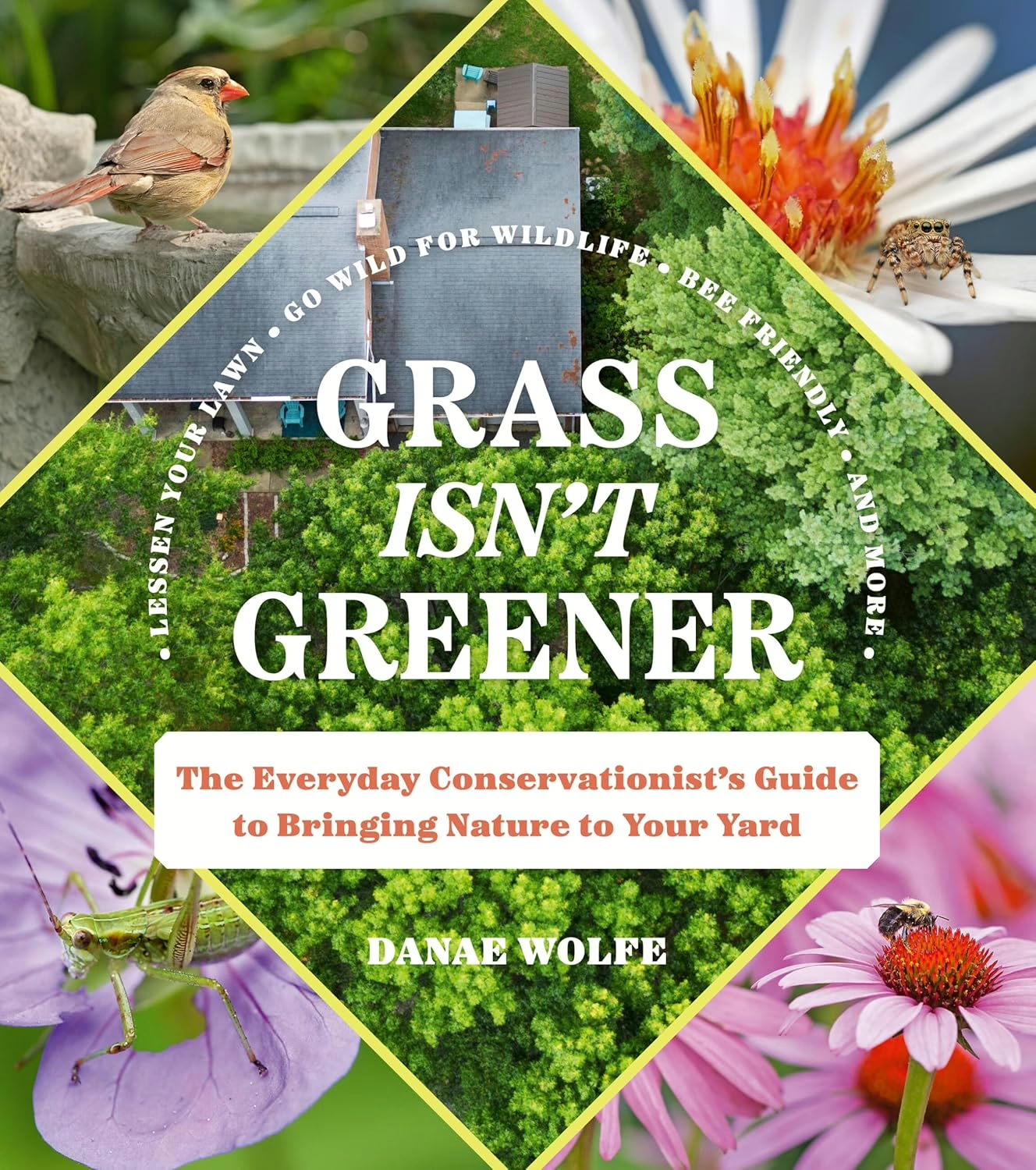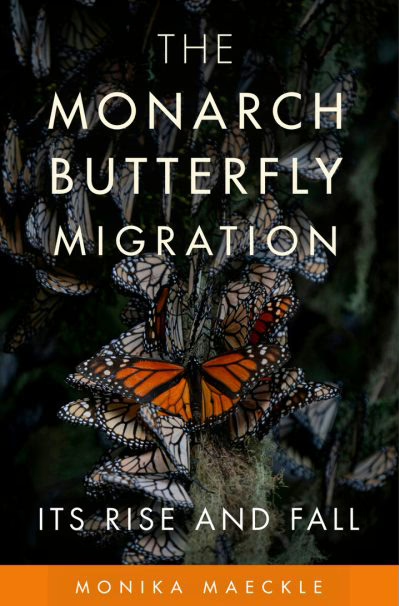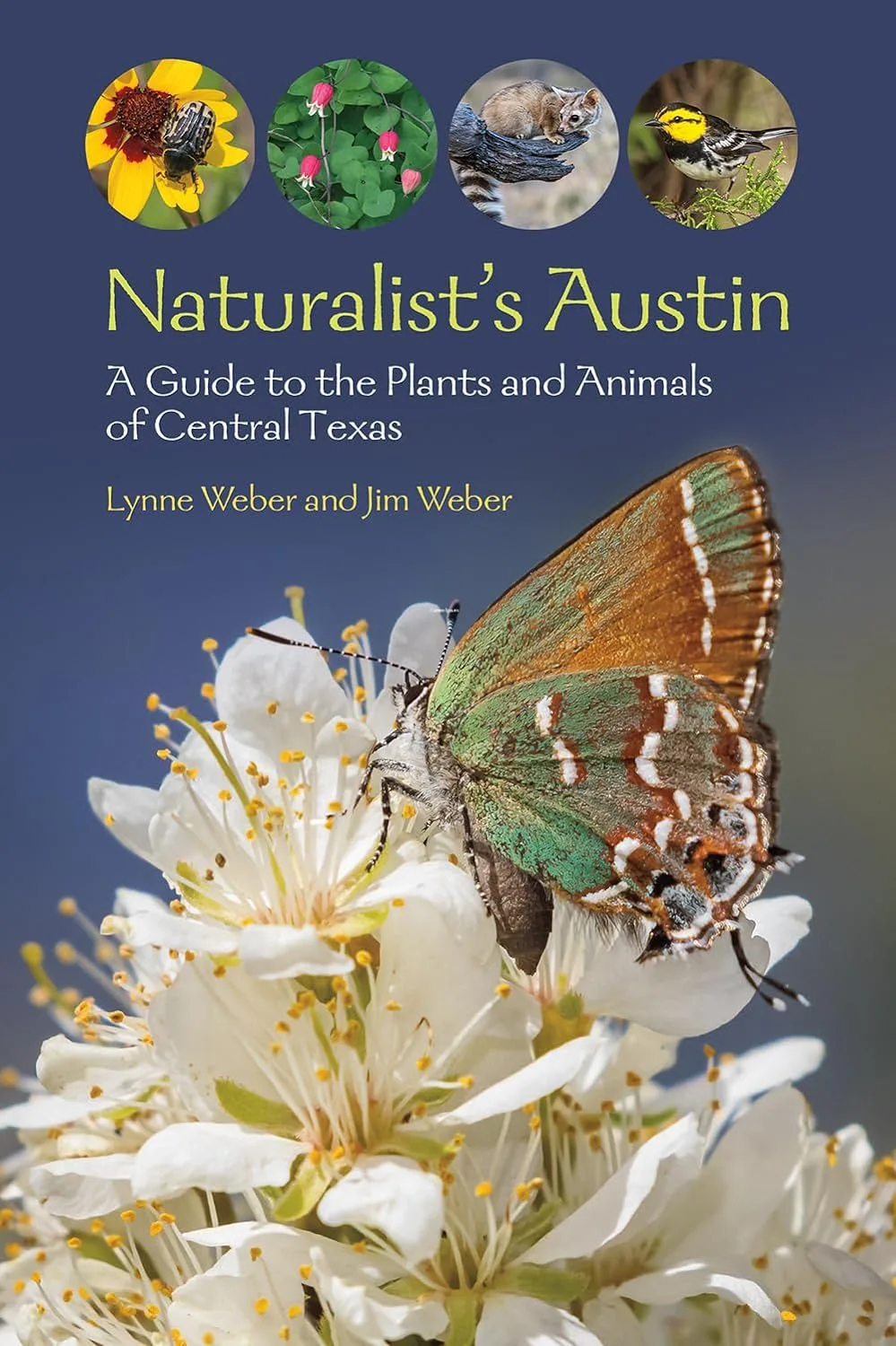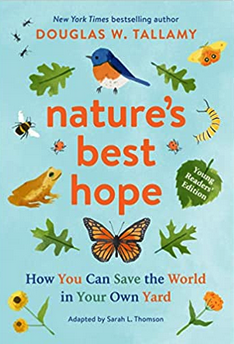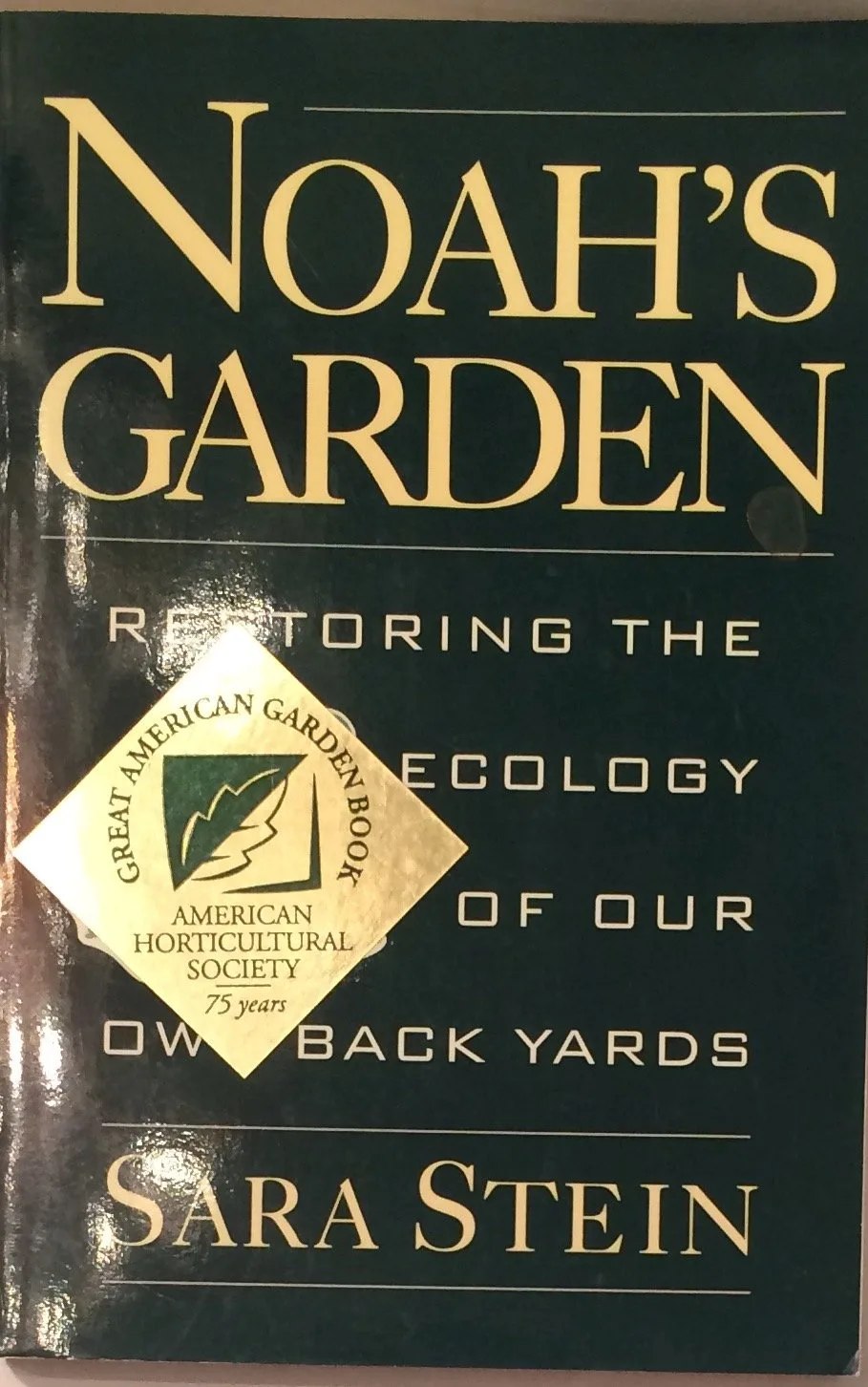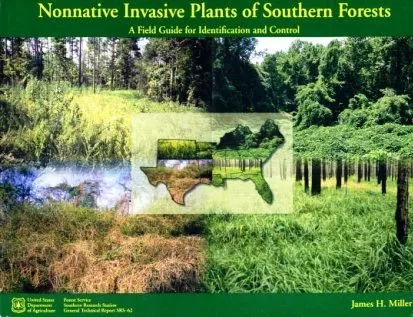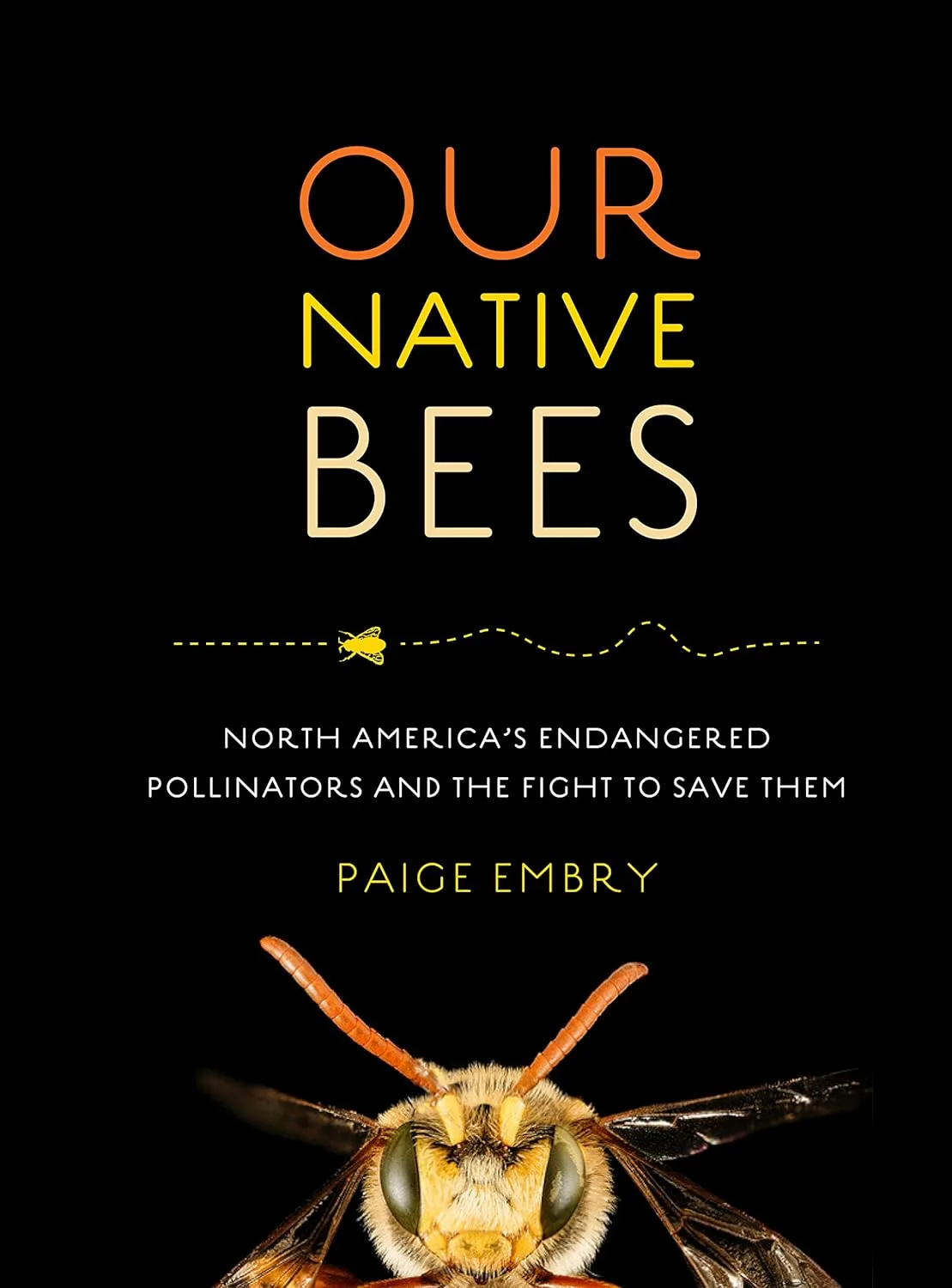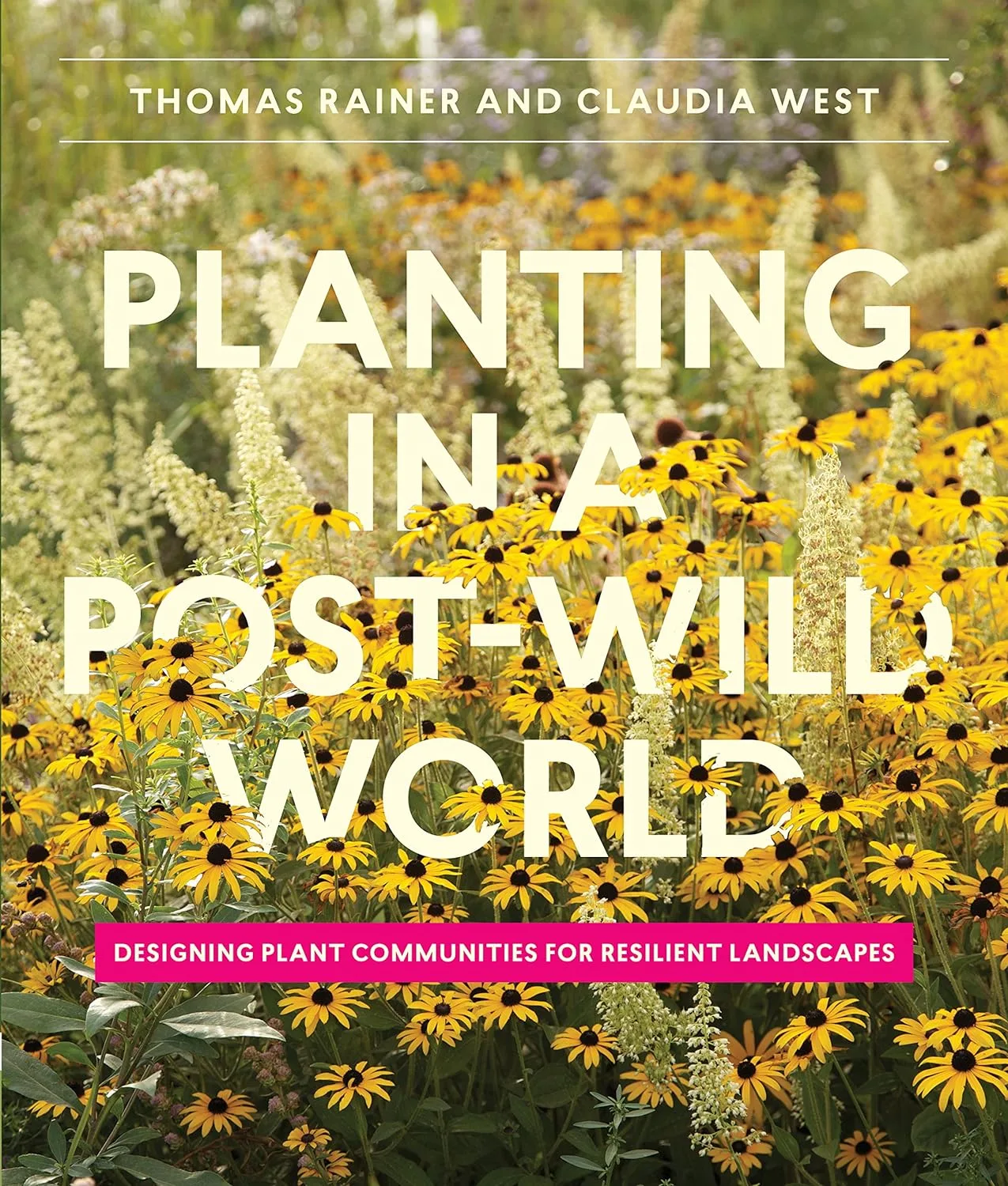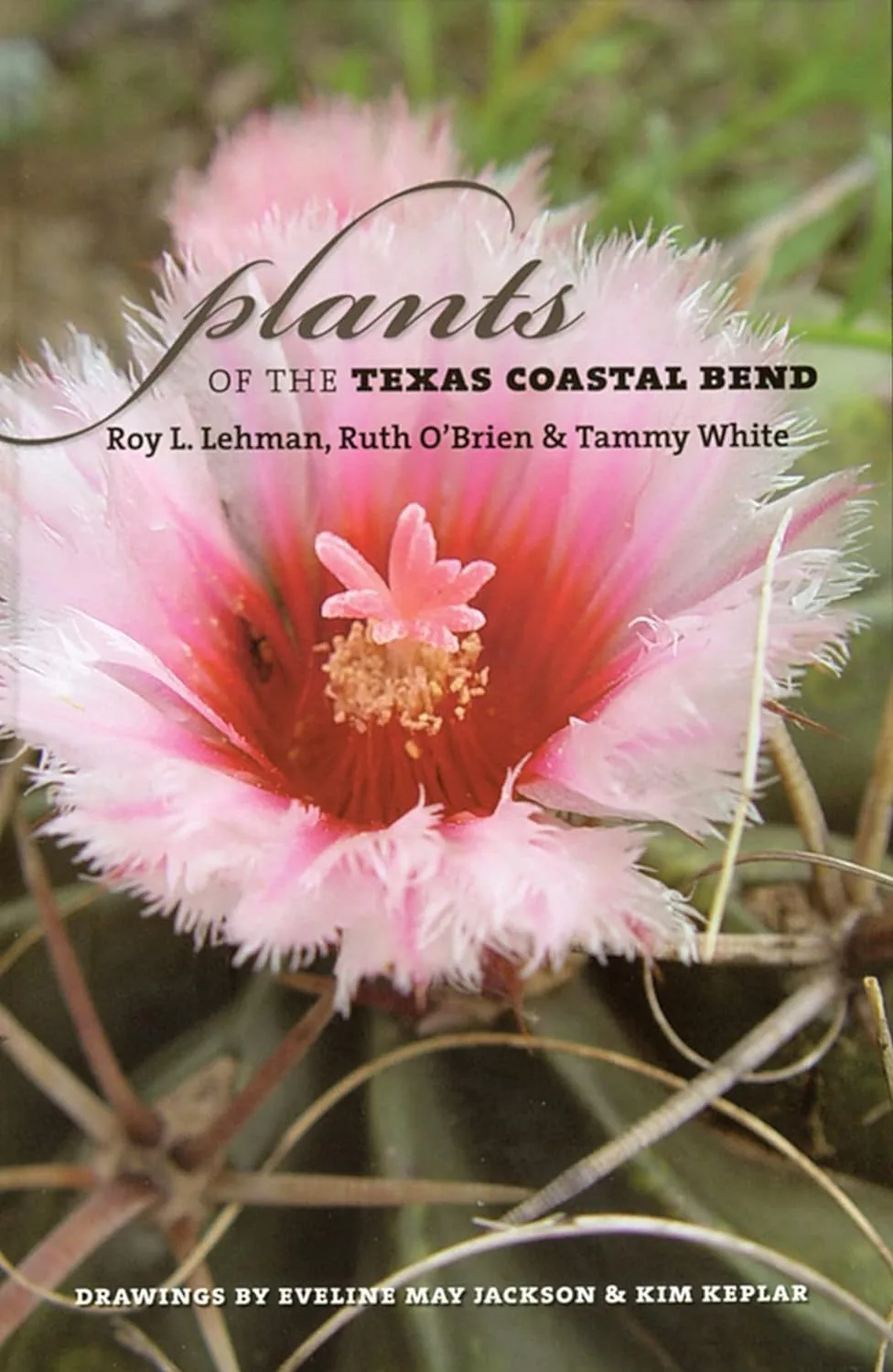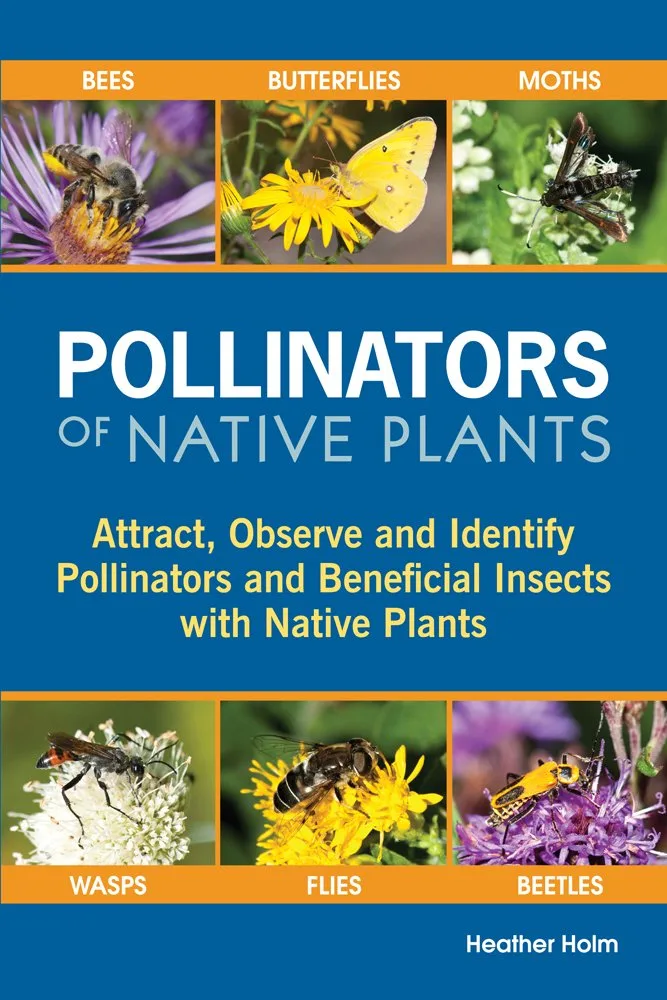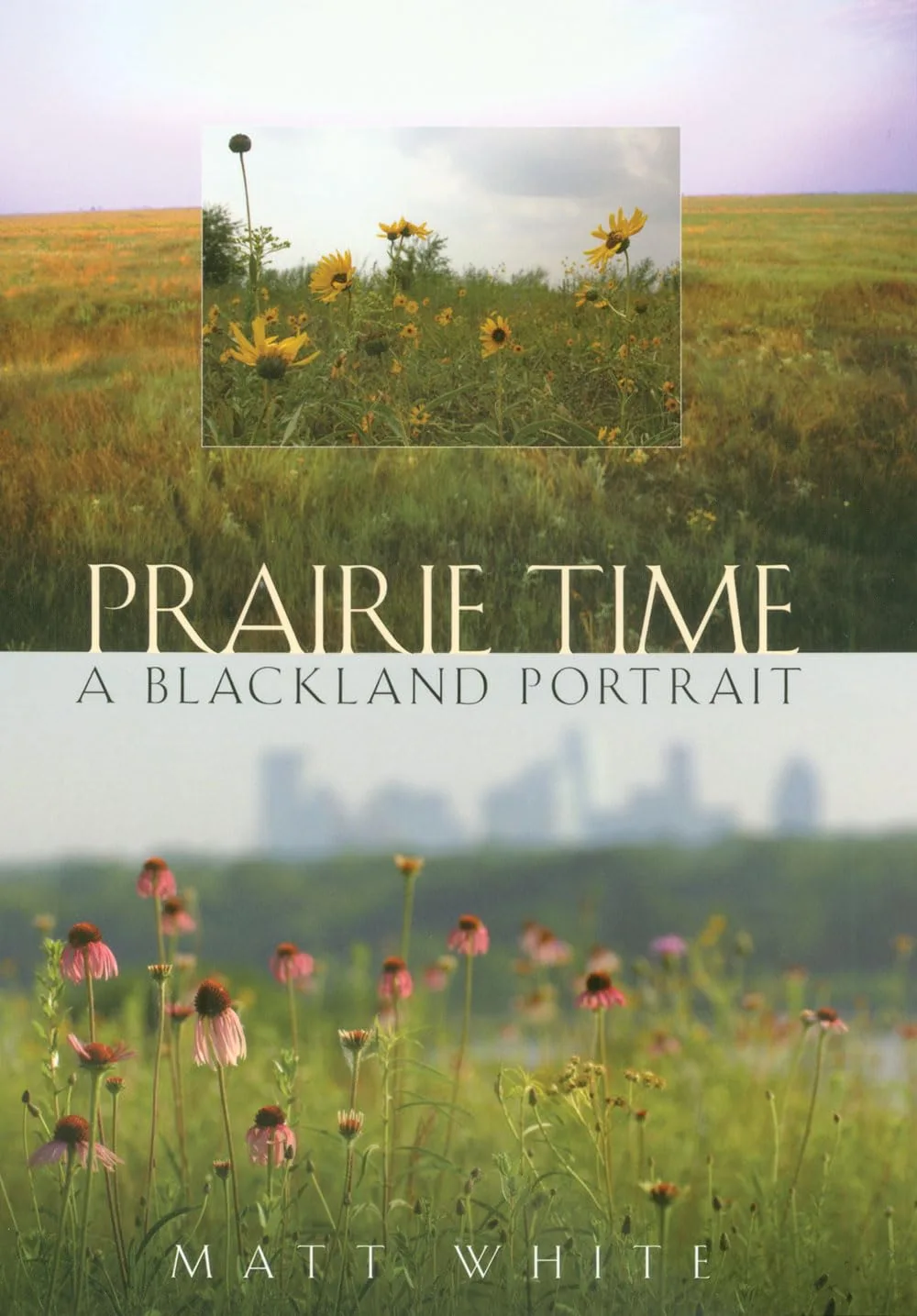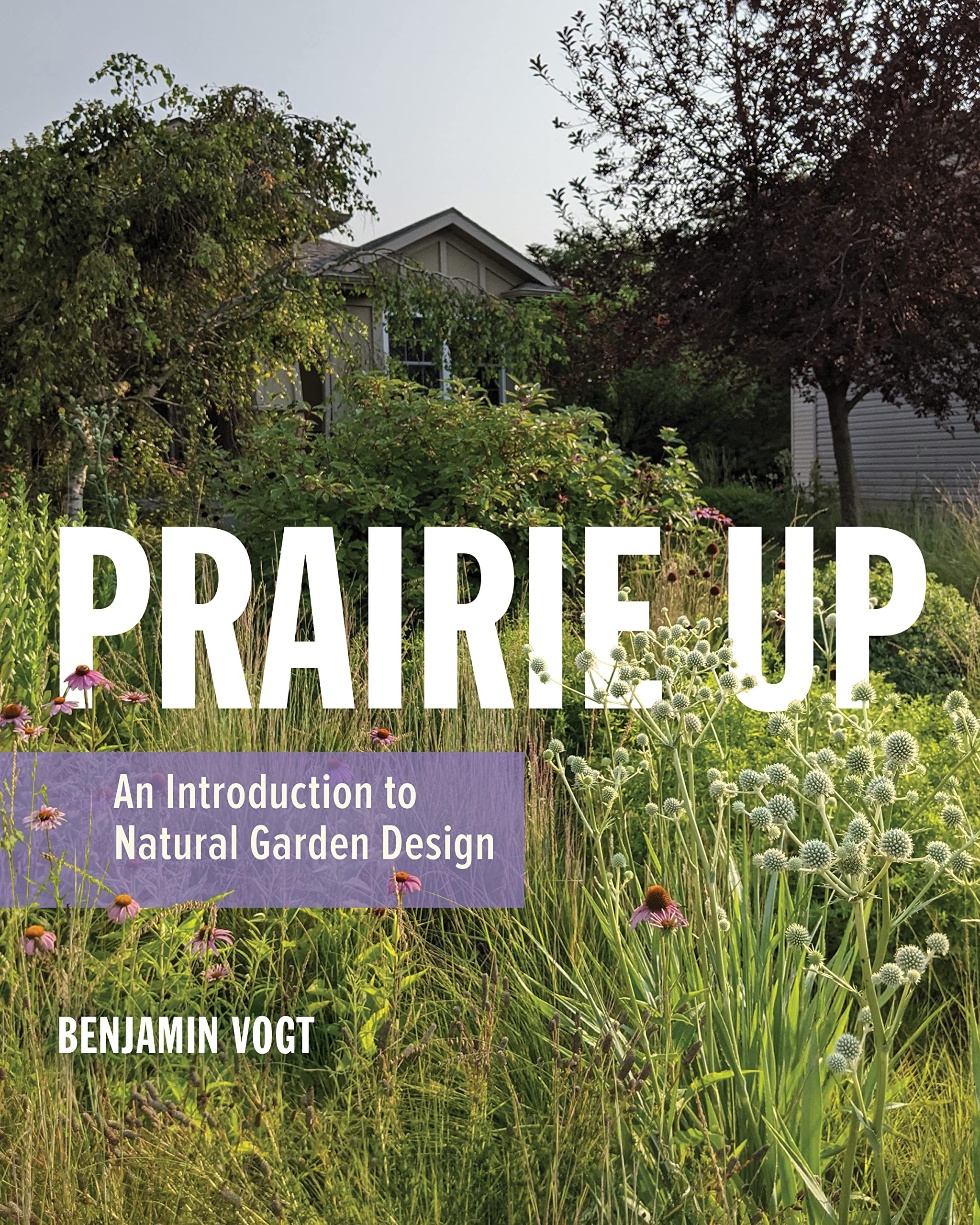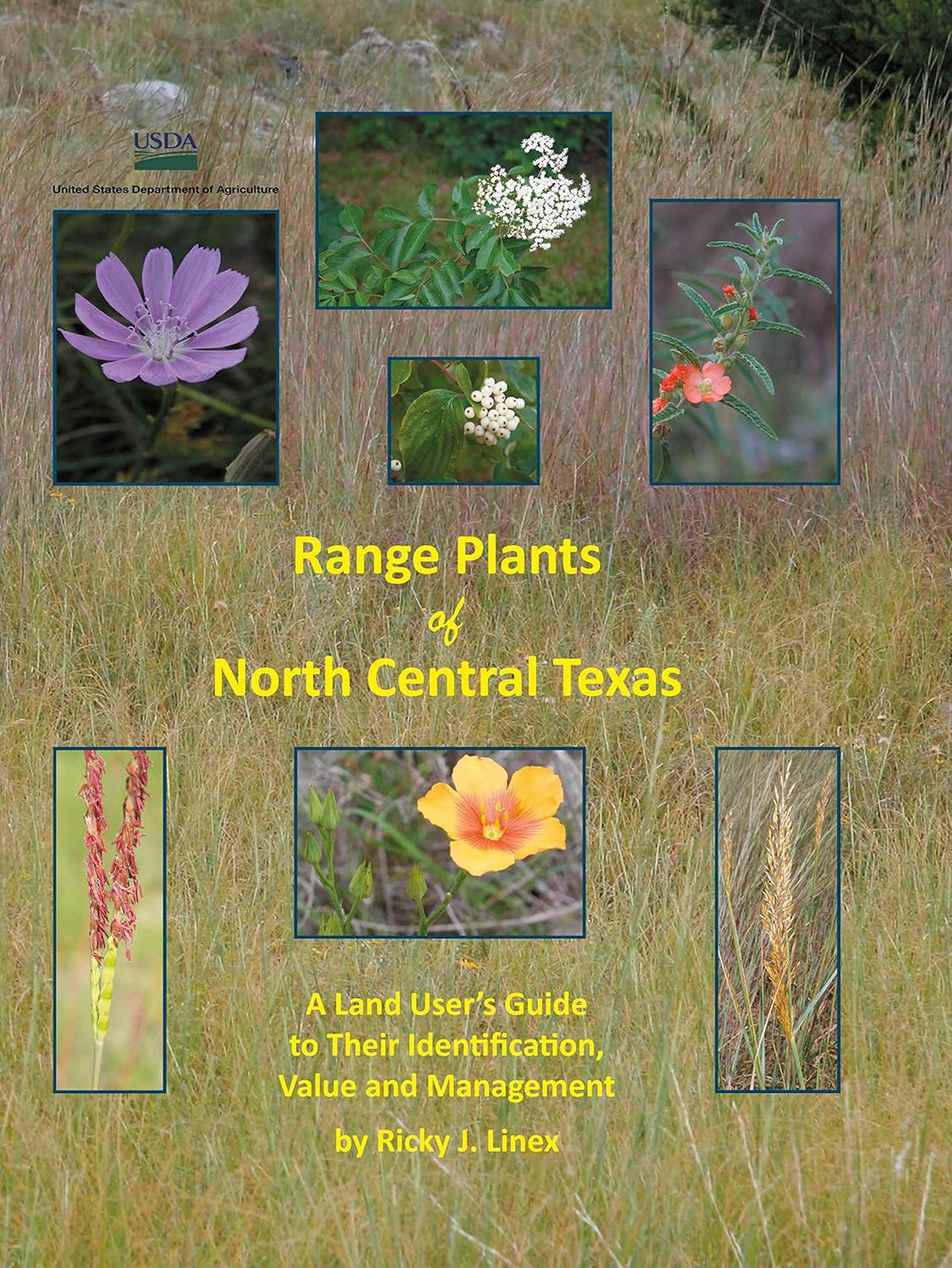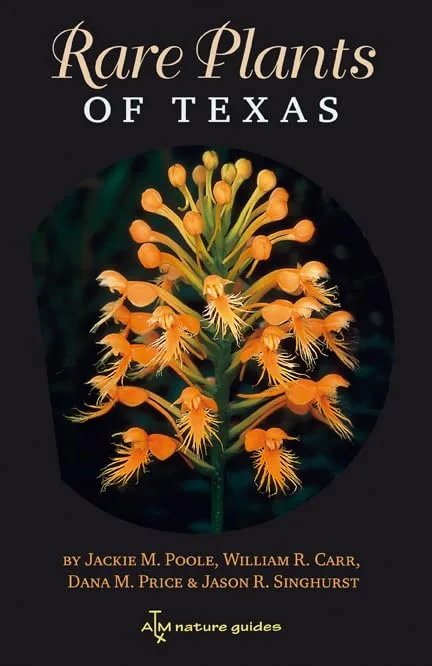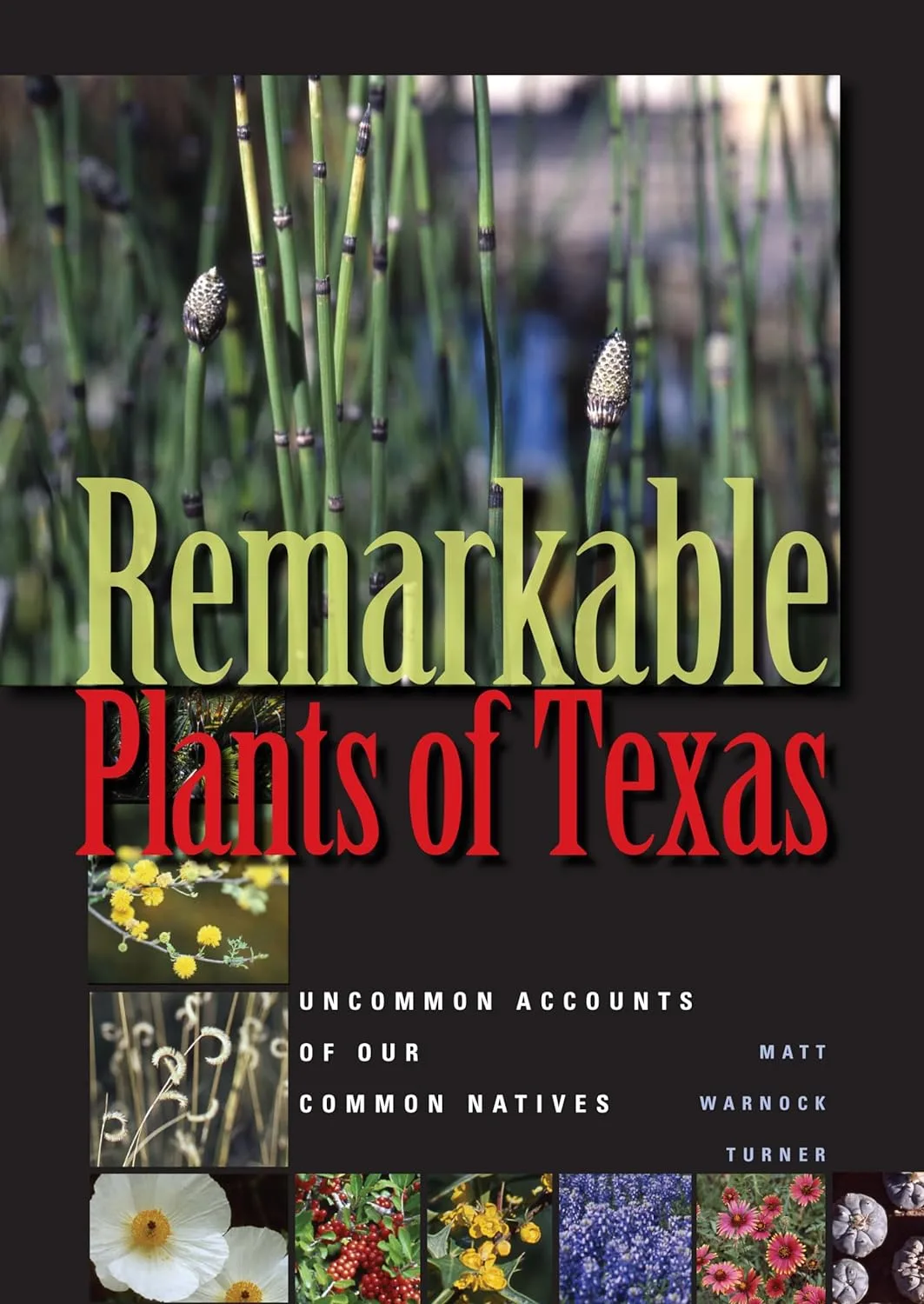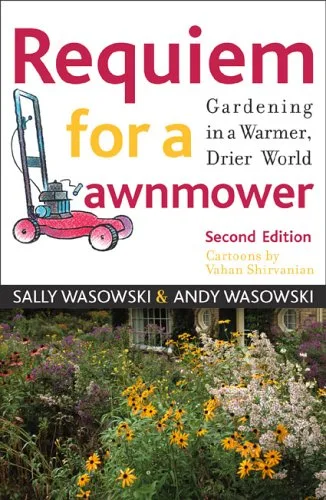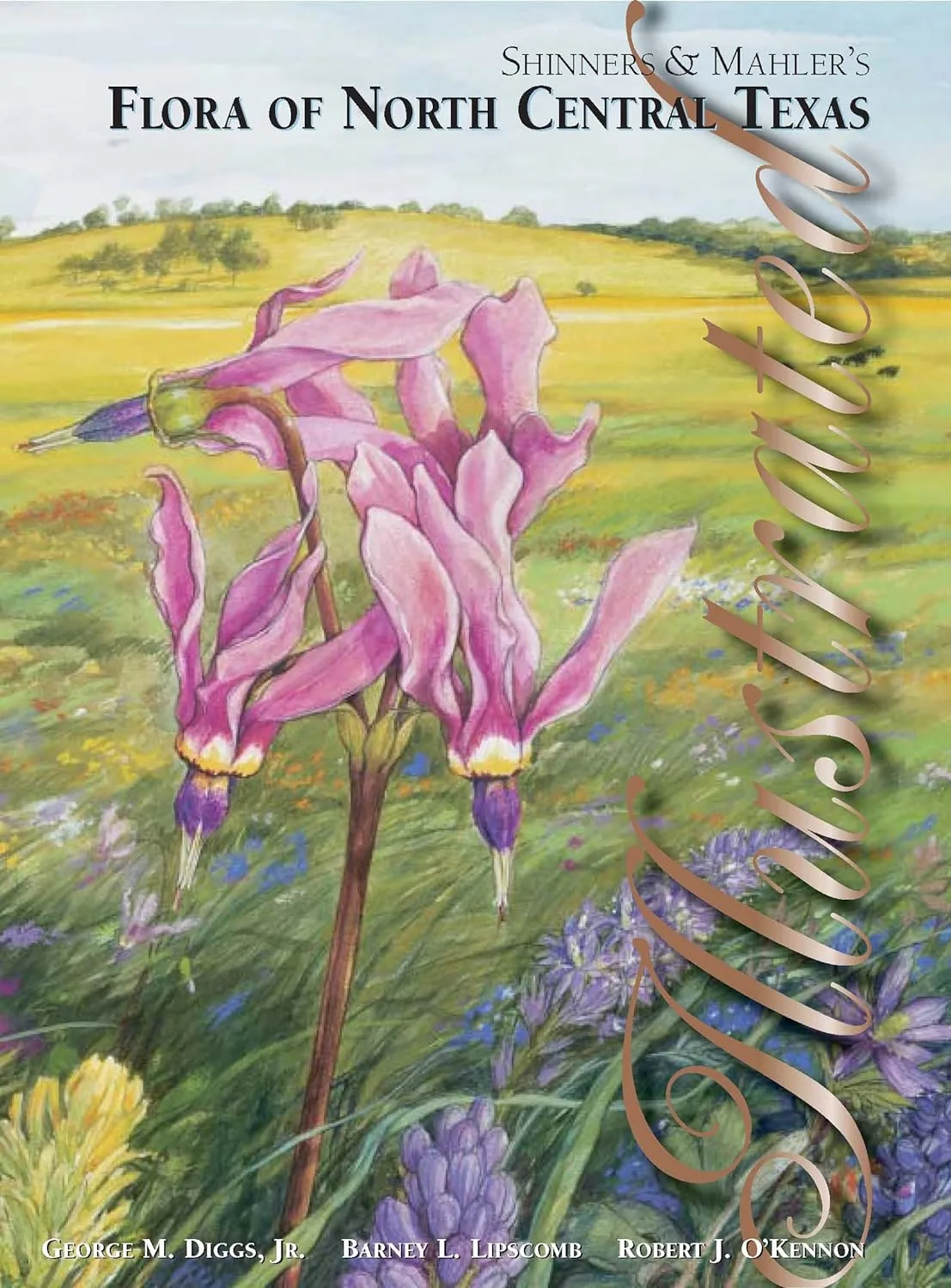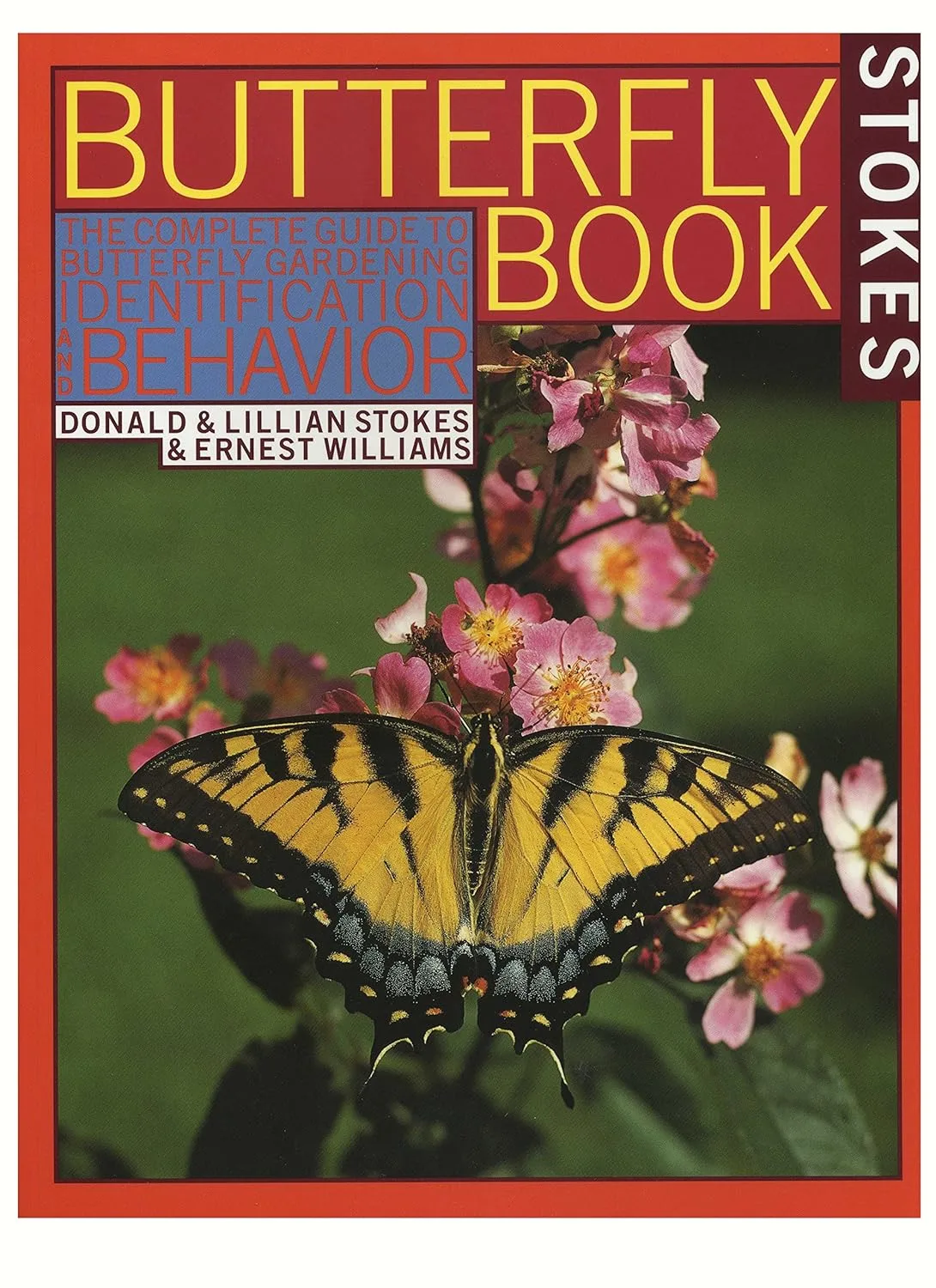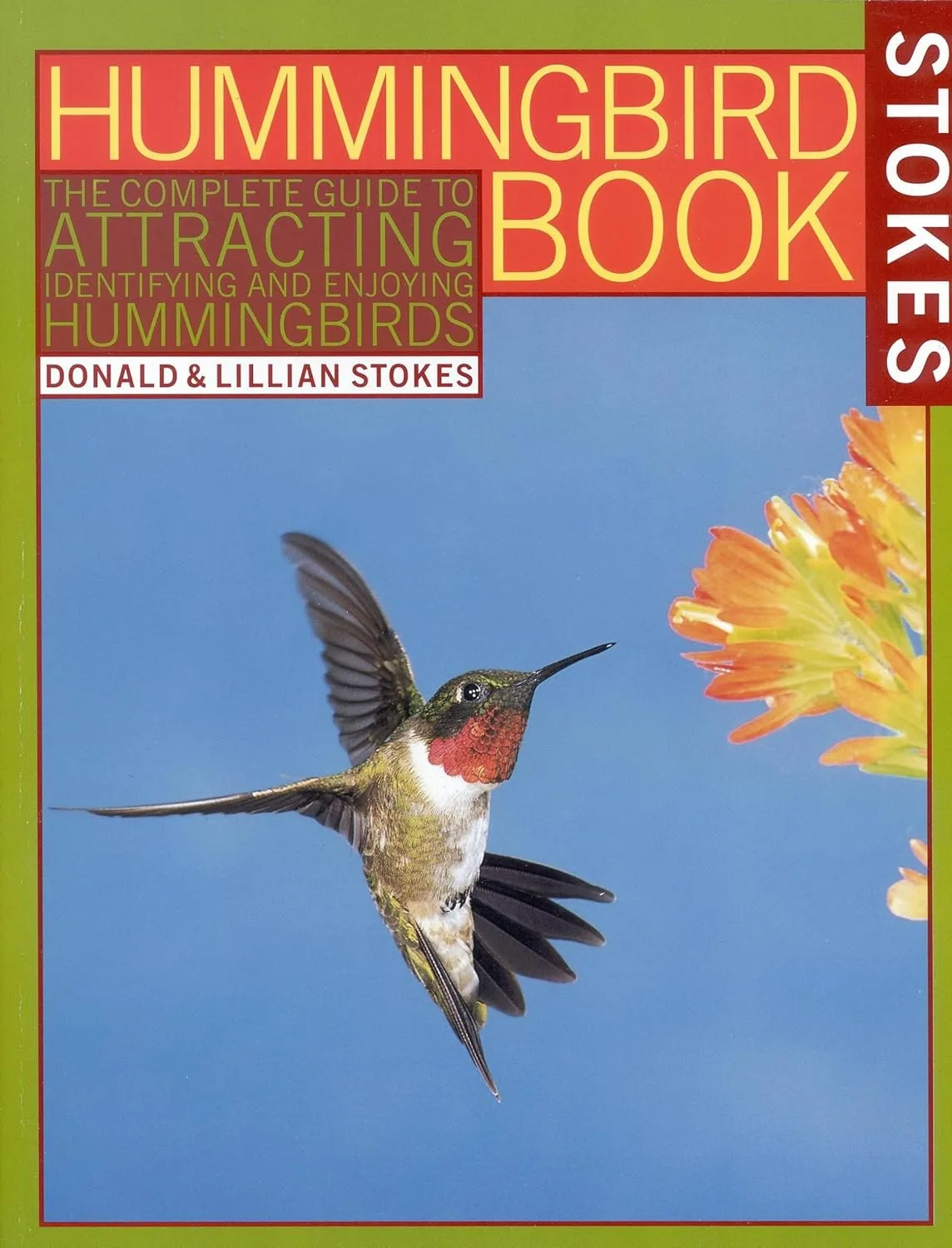
Welcome to our Virtual Bookstore! Enjoy browsing our selection of books about the Native Plants of Texas. We are offering this virtual bookstore through an Amazon Associates partnership. A portion of all purchases made through the Amazon links on this page will support the Native Plant Society of Texas. Thank you in advance for your support!
Our bookstore has raised thousands of dollars to support Texas native plants thanks to you!

Explore top picks and trending titles!
Expand these to see some featured books.
Best Sellers
How Can I Help?: Saving Nature with Your Yard
Douglas W. Tallamy
In How Can I Help?, Tallamy tackles the questions commonly asked at his popular lectures and shares compelling and actionable answers that will help gardeners and homeowners take the next step in their ecological journey. Topics range from ecology, evolution, biodiversity and conservation to restoration, native plants, invasive species, pest control, and supporting wildlife at home. Tallamy keenly understands that most people want to take part in conservation efforts but often feel powerless to do so as individuals. But one person can make a difference, and How Can I Help? details how.
Whether by reducing your lawn, planting a handful of native species, or allowing leaves to sit untouched, you will be inspired and empowered to join millions of other like-minded people to become the future of backyard conservation.
Read Review...
The Texas Native Plant Primer: 225 Plants for an Earth-Friendly Garden
Andrea DeLong-Amaya
From Texas’s leading native plant organization comes an accessible and colorful guide to planting native for home gardeners at every level of expertise.
Do you want a garden that makes a real difference? Choose plants native to our Texas. The rewards will benefit you, your yard, and the environment—from reducing maintenance tasks to attracting earth-friendly pollinators such as native birds, butterflies, and bees. Native plant expert Andrea DeLong-Amaya and the world famous Lady Bird Johnson Wildflower Center make adding these superstar plants easier than ever before, with proven advice that every home gardener can follow.
This incomparable sourcebook includes native ferns, grasses, wildflowers, perennials, vines, shrubs, and trees. It’s everything you need to know to create a beautiful and beneficial garden.
Read Review...
Gardening With Prairie Plants: How To Create Beautiful Native Landscapes
Sally Wasowski and Andy Wasowski
Filled with practical advice and detailed information, this indispensable guide to prairie gardening shows readers how to choose space, plan a garden, select plants and flowers, and much more.
Read Review...
Native Plants for Southwestern Landscapes
Judy Mielke
For gardeners who want to conserve water, the color, fragrance, shade, and lush vegetation of a traditional garden may seem like a mirage in the desert. But such gardens can flourish when native plants grow in them. In this book, Judy Mielke, an expert on Southwestern gardening, offers the most comprehensive guide available to landscaping with native plants. Writing simply enough for beginning gardeners, while also providing ample information for landscape professionals, she presents over three hundred trees, shrubs, vines, grasses, groundcovers, wildflowers, cacti, and other native plants suited to arid landscapes.
The heart of the book lies in the complete descriptions and beautiful color photographs of plants native to the Mojave, Sonoran, and Chihuahuan desert regions of the southwestern United States and northern Mexico. Mielke characterizes each plant and gives detailed information on its natural habitat, its water, soil, light, temperature, and pruning requirements, and its possible uses in landscape design.
Read Review...
Bringing Nature Home: How You Can Sustain Wildlife with Native Plants
Douglas W. Tallamy
This book is a call to arms for gardeners who are searching for a better way to plant, maintain, and enjoy their gardens. The author argues that traditional landscaping practices are harmful to the environment and unsustainable in the long run. He advocates for a new approach to gardening that works with nature, not against it. The book provides practical advice on how to create a low-maintenance, sustainable garden that is both beautiful and beneficial to the environment. It includes in-depth profiles of native plants that are well-suited to different regions of the United States, as well as tips on how to design a garden that is both aesthetically pleasing and ecologically sound.
Read Review...
Nature’s Best Hope
Douglas W. Tallamy
Nature’s Best Hope shows how homeowners everywhere can turn their yards into conservation corridors that provide wildlife habitats. Because this approach relies on the initiatives of private individuals, it is immune from the whims of government policy. Even more important, it’s practical, effective, and easy—you will walk away with specific suggestions you can incorporate into your own yard.
Read Review...
Native Texas Gardens: Maximum Beauty Minimum Upkeep
Sally Wasowski and Andy Wasowski
This time-proven classic explores 600 gardens that make the most of the Lone Star State’s home-grown native greenery.
Read Review...
Native Texas Plants: Landscaping Region by Region
Sally Wasowski and Andy Wasowski
Landscape designs for every ecoregion and terrain found across Texas.
Read Review...
Newest Additions
Nature’s Action Guide: How to Support Biodiversity and Your Local Ecosystem
Sarah F. Jayne
The scale of the looming biodiversity crisis can feel overwhelming, yet our individual actions do have an impact. Are you ready to transform your yard into a thriving, biodiverse habitat? Nature’s Action Guide: How to Support Biodiversity and Your Local Ecosystem, a companion to Doug Tallamy’s Nature’s Best Hope, highlights fifteen urgent actions that you can take to create healthy, functioning ecosystems wherever you live or work.
Read Review...
Grass Isn’t Greener: The Everyday Conservationist’s Guide to Bringing Nature to Your Yard
Danae Wolfe
Rooted in twenty practical steps that anyone can take starting today, Grass Isn’t Greener demonstrates how small changes in your yard or garden can create lasting impact for the planet: from leaving your leaves to selecting eco-friendly holiday decorations; from eliminating light pollution to attracting wildlife; from saving seeds to devoting even a small patch of lawn to native plants. With easy-to-follow advice and real-life examples, conservation educator Danae Wolfe will help you appreciate the new life you’ve attracted to your yard. A companion for new homeowners, renters, and gardeners, Grass Isn’t Greener is a resource for anyone looking for little ways to make a big difference—and to have fun doing it.
Read Review...
Plants with Purpose: Twenty-Five Ecosystem Multitaskers
Monika Maeckle
Many gardeners in the southwest are perfectly satisfied with beautiful, ornamental plants and cultivate lush lawns despite the environmental consequences of doing so. Other gardeners, however, have moved to embrace pollinator plants that provide resources to bees and butterflies. And some have embraced the xeriscape approach, which uses indigenous plant life to minimize the need for water. But this is just the beginning.
Plants with Purpose speaks to gardeners who are mindful of the environmental impact of traditional ornamental plants and offers twenty-five alternative plantings that are beautiful, viable, and functional. Whether edible, therapeutic, medicinal, or attractive to pollinators, the plants in this collection provide a pathway to a more environmentally sustainable and functional garden and landscape. From agarita (for jelly and tarts) to wild garlic (edible greens), this selection of plants is curated specifically for warm climates and are beneficial to the larger ecosystem.
In addition to history and description, each plant entry provides basic information and care tips such as plant type, light/water/soil needs, size, bloom and time, fruit, and availability. Many entries contain recipes, tea ideas, and herbal remedies. This “secret life of plants” provides a counternarrative to the standard texts on gardening and landscaping.
Illustrated throughout with 200 beautiful color photographs of plants in their various stages of development and showcasing their multiple applications, Plants with Purpose will encourage readers to experiment with their gardening for a deeper engagement with plant life and the environment.
Read Review...
How Can I Help?: Saving Nature with Your Yard
Douglas W. Tallamy
Read Review...
The Monarch Butterfly Migration- Its Rise and Fall
Monika Maeckle
Each fall, millions of monarch butterflies migrate from Canada to Mexico. Their incredible journey—nearly 3,000 miles long—takes them through Oklahoma, Texas, and other US states, where butterfly devotees eagerly await their arrival. The monarch migration is a brilliant demonstration of nature’s ingenuity, but the delicate creatures face many perils, and the number of migrating monarchs is declining sharply. This compelling book weaves natural history, science, and personal experience to explore the rise and fall of one of nature’s most spectacular phenomena.
While monarch butterflies have been migrating for centuries, they seized public attention in 1976 when a National Geographic magazine cover story featured the “discovery” of their roosting sites in Mexico. The article rocked the world of lepidoptery, solved a scientific mystery, and opened the door to human meddling. The new revelations put a spotlight on the insects, and inspired the creation of butterfly sanctuaries in Mexico as well as myriad efforts to protect them. Almost 40 years later, many believe that monarch butterflies are in danger of extinction. How real is that danger?
Journalist and butterfly advocate Monika Maeckle addresses this question and more as she delves into the rich history and current plight of the monarch butterfly. Through meticulous reporting, Maeckle offers unique insights on the butterflies as well as a nuanced portrait of the shifting and sometimes contentious community of scientists, enthusiasts, and “flutterati” who have emerged to support the monarchs’ cause.
A highly engaging book, The Monarch Butterfly Migration also focuses a wider lens on the effects of climate change and the tensions between advocacy and scientific accuracy. In addition to calling for environmental sustainability, this book reminds each of us to notice—and never take for granted—the natural wonders in our own backyards.
Read Review...
Phenology
Theresa M. Crimmins
Phenology is all about timing—when trees leaf out, flowers bloom, birds migrate, animals bear young and hibernate—and it is everywhere around us. This handy companionable volume shows how we are all phenologists in our own way, and how the everyday science can help us make sense of the changing seasons and our changing world. Explaining how the phenomenon of phenology is threaded through our daily lives, Theresa Crimmins points to events that occur on an annual basis in plants’ and animals’ lives in response to fluctuations in daylength, temperatures, and rainfall patterns. She also covers less visible seasonal events, such as when roots typically begin to grow or when mushrooms release their spores.
On a more urgent note, Phenology describes how this seasonal activity is being affected by rapidly changing climate conditions—and why this matters. Consequently, the book invites readers to participate in documenting the timing of seasonal life cycle events—for the practice’s real benefits to mental health, but also for the good of the environment, as the data gathered can be directly helpful in supporting climate change action.
Read Review...
The Texas Native Plant Primer: 225 Plants for an Earth-Friendly Garden
Andrea DeLong-Amaya
Read Review...
How To Make a Pollinator Garden: Como Hacer un Jardín Polinizador
Camelia Maier
How To Make a Pollinator Garden, a bilingual picture book in English and Spanish, teaches readers why pollinators are important, what kids can do to help them thrive, and provides step-by-step instructions to create a pollinator garden. The engaging story is paired with relatable, diverse characters throughout the artwork.
An interdisciplinary project funded in part by the Texas Woman’s University Creative Arts and Humanities Grant, the book is written by Camelia Maier, PhD, TWU Biology professor with scholarly expertise in plant-pollinator relationships and director of The Bettye Myers Butterfly Garden. The illustrations and design were created by TWU graphic design majors Chelsea Flores and Kathryn Kelly under the art direction of Sheli Petersen, professor of Graphic Design & Illustration. Maria Serrano, PhD, of the TWU Biology faculty provided the Spanish translation.
Read Review...
Browse our Books
Naturalist’s Austin: A Guide to the Plants and Animals of Central Texas
Lynne M. Weber, Jim Weber
With clarity and depth of knowledge, Naturalist’s Austin: A Guide to the Plants and Animals of Central Texas provides a tour that includes nearly 700 species of plants and animals native to the region. The book opens with a natural history overview underscores the importance of a strong environmental ethic for ensuring the ability of naturally occurring species to thrive within an urban environment—even one exhibiting the type of explosive growth found in Austin.
Highlighting features of the area’s natural processes (migration, wildfire, caves, aquifers, and others), Weber and Weber present lavishly illustrated accounts of both common and unique plant and animal species, with selected exotics included, that may be found in Austin and the surrounding areas. Each section in the species accounts opens with an informative overview, and the individual accounts discuss species status, seasonality, descriptions, habitat, and “fun facts” related to interesting behaviors or adaptations.
With vivid photographs throughout, this colorful and informative guide is sure to be a favorite of Texas nature lovers. Naturalist’s Austin provides an authoritative and enjoyable resource for the greater appreciation and better stewardship of our natural resources.
Read Review...
Nature’s Action Guide: How to Support Biodiversity and Your Local Ecosystem
Sarah F. Jayne
Read Review...
Nature’s Best Hope (Young Readers’ Edition): How You Can Save the World in Your Own Yard
Sarah L. Thomson and Douglas W. Tallamy
This middle grade edition of the groundbreaking bestseller by Doug Tallamy will inspire kids to use their backyard to help save the planet.
In Nature’s Best Hope (Young Readers’ Edition), Tallamy empowers kids to use their own yards to help combat the negative effects of climate change. He does so by breaking down complex concepts into simple terms and real-world examples that kids can easily grasp. Black and white photographs help further clarify concepts. In addition to sharing the science, Tallamy encourages kids to take direct action. Some of these ideas include planting an oak tree at home. If that’s too large of a task, he suggests they can plant asters—a beautiful flower whose pollen bees use to feed their young.
By helping the next generation see that they have power and agency over our collective future, this empowering book will drive home the positive point that kids are truly nature’s best hope.
Read Review...
Noah’s Garden: Restoring the Ecology of Our Own Back Yards
Sara Stein
This book shows us how our landscape style of neat yards and gardens has devastated suburban ecology, wiping out entire communities of plants and animals by stripping bare their habitats and destroying their food supplies. When Stein realized what her intensive efforts at making a traditional garden had done, she set out to “ungarden.” Her book interweaves an account of her efforts with an explanation of the ecology of gardens. Noah’s Garden has become the bible of the new environmental gardening movement, and the author is one of its most popular spokespersons.
Read Review...
Nonnative Invasive Plants of Southern Forests: A Field Guide for Identification and Control
James H. Miller, Erwin B. Chambliss
This book provides information on accurate identification and effective control of the 33 nonnative plants and groups that are currently invading the forests of the 13 Southern States, showing both growing and dormant season traits. It lists other nonnative plants of growing concern, control strategies, and selective herbicide application procedures. Recommendations for preventing and managing invasions on a specific site include maintaining forest vigor with minimal disturbance, constant surveillance and treatment of new unwanted arrivals, and finally rehabilitation following eradication.
Read Review...
North Central Texas Wildflowers: Field Guide Second Edition
Mary Curry
This field guide and desk reference, which won the 2016 Native Plant Society of Texas Carroll Abbott Memorial Award for the first edition, has been updated to include 1703 photos (406 more than the first edition) and 41 drawings of 427 species from Gainesville to the Hill Country of Texas. Full color illustrations show overall views and close-ups of leaves and flowers. Written, bullet-point details highlight features for field identification, soil types of where to find the plant, bloom times, common name(s), scientific name(s), and native or non-native status.
Read Review...
Our Native Bees: North America’s Endangered Pollinators and the Fight to Save Them
Paige Embry
Honey bees get all the press, but the fascinating story of North America’s native bees—endangered species essential to our ecosystems and food supplies—is just as crucial. Through interviews with farmers, gardeners, scientists, and bee experts, Our Native Bees explores the importance of native bees and focuses on why they play a key role in gardening and agriculture. The people and stories are compelling: Paige Embry goes on a bee hunt with the world expert on the likely extinct Franklin’s bumble bee, raises blue orchard bees in her refrigerator, and learns about an organization that turns the out-of-play areas in golf courses into pollinator habitats. Our Native Bees is a fascinating, must-read for fans of natural history and science and anyone curious about bees.
Read Review...
Planting in a Post-Wild World: Designing Plant Communities for Resilient Landscapes
Thomas Rainer, Claudia West
Over time, with industrialization and urban sprawl, we have driven nature out of our neighborhoods and cities. But we can invite it back by designing landscapes that look and function more like they do in the wild: robust, diverse, and visually harmonious. This book is an inspiring call to action dedicated to the idea of a new nature—a hybrid of both the wild and the cultivated—that can flourish in our cities and suburbs. This is both a post-wild manifesto and practical guide that describes how to incorporate and layer plants into plant communities to create an environment that is reflective of natural systems and thrives within our built world.
Read Review...
Plants of the Rio Grande Delta
Alfred Richardson
This book provides an accessible and reliable identification guide to all of the plants, excluding grasses, of the region—some 823 species. In clear, nontechnical language, Alfred Richardson gives a brief description of each species, along with its range, habitat, and general blooming time. Over two hundred superb color photographs offer quick and easy field identification, while line drawings illustrate notable characteristics of the plants.
This volume expands and updates Alfred Richardson’s previous book, Plants of Southernmost Texas, published in 1990 by the Gorgas Science Foundation. It will be an essential field guide for everyone interested in South Texas flora, from winter visitors and Valley residents to professional botanists.
Read Review...
Plants of the Texas Coastal Bend
Roy L. Lehman
For everyone who studies or simply enjoys the impressive variety of wild plants that grow in the counties of Texas’ coastal bend, here is an authoritative, user-friendly book that will make an excellent reference.
Read Review...
Plants with Purpose: Twenty-Five Ecosystem Multitaskers
Monika Maeckle
Read Review...
Pollinators of Native Plants: Attract, Observe and Identify Pollinators and Beneficial Insects with Native Plants
Heather Holm
This is is the first comprehensive book to illustrate the specific relationships between native pollinators and native plants. Organized by plant communities, the book profiles over 65 perennial native plants of the Midwest, Great Lakes region, Northeast and southern Canada and the pollinators, beneficial insects and flower visitors the plants attract.
With its easy-to-use format, the book provides the reader with information on how to attract, plant for and identify pollinators with native plants. Beautifully designed and illustrated with over 1600 photos of plants and insects, the book includes information on pollination, types of pollinators and beneficial insects, pollinator habitat and conservation as well as pollinator landscape plans.
This is an important book for gardeners, students, native plant enthusiasts, landscape restoration professionals, small fruit and vegetable growers and farmers who are interested in attracting, identifying, supporting or planting for pollinators.
Read Review...
Prairie Time, a Blackland Portrait
Matt White
In its most extensive prime, the Texas Blackland Prairie formed a twelve-million-acre grassy swath across the state from near San Antonio north to the Red River. Perhaps less than one tenth of one percent of this vast prairie remains—small patches tucked away here and there, once serving as hay meadows or sprouting from rock too stony to plow.
Matt White’s connections with both prairie plants and prairie people are evident in the stories of discovery and inspiration he tells as he tracks the ever dwindling parcels of tallgrass prairie in northeast Texas. In his search, he stumbles upon some unexpected fragments of virgin land, as well as some remarkable tales of both destruction and stewardship.
Helping us understand what a prairie is and how to appreciate its beauty and importance, White also increases our awareness of prairies, past and present, so that we might champion their survival in whatever small plots remain.
Read Review...
Prairie Up: An Introduction to Natural Garden Design
Benjamin Vogt
This approachable introduction to prairies is an accessible and inspirational guide to garden design for those wanting sustainable, beautiful, and functional landscapes.
Read Review...
Range Plants of North Central Texas: a Land User’s Guide to Their Identification, Value and Management
Ricky J. Linex
This guide focuses on the native plants found in the Rolling Plains, Cross Timbers and Prairies, Blackland Prairie, and Post Oak Savannah vegetational areas of Texas.
The book features 1,450 photos covering 324 plants, including 160 forbs (wildflowers), 59 grasses, and 105 woody plants. Each plant is described with an emphasis on leaves, flowers, fruits, and other details to aid in identification. Linex provides valuable insights into the value of these plants for different species of livestock and wildlife. Understanding their significance is crucial for successful land management. Additionally, management tips are offered to help maintain or enhance the presence of these plants on your property.
The book is arranged alphabetically by plant family, then by genus, and finally by species within each genus. This grouping facilitates easier comparison and identification. While the focus is on North Central Texas, the book’s content is relevant to landowners, students, and wildflower enthusiasts across the middle half of Texas and southern Oklahoma due to regional overlap among many of these plants.
Read Review...
Rare Plants of Texas
Jackie M. Poole, William R. Carr, Dana M. Price, Jason R. Singhurst
Since 1987, when Texas Parks and Wildlife Department botanists published their first in-house summary of Texas’ threatened plants, more than 225 species have been identified and described as endangered, imperiled, or declining. Because most of these plants are too rare to be mentioned, much less pictured, in standard field guides, only a handful of botanists have known what these plants or their habitats look like.
Complete with photographs, line drawings, and county maps, this book describes the officially listed, candidate, and species-of-concern plants in Texas. Individual accounts include information on distribution, habitat, physical description, flowering time, federal and state status, similar species, and published references. The authors also provide brief introductory chapters on the state’s vegetation regions; the history of plant conservation in Texas; federal, state, and other ranking methods; threats to native plants; recovery methods; and reporting guidelines.
With the growing recognition that native plants support wildlife, conserve water, promote biodiversity, and exemplify our natural heritage, we must also recognize the need for greater understanding of endangered plants, the threats to their existence, and the importance of their survival. Rare Plants of Texas is highly recommended for professional botanists and advanced researchers, conservationists, students, range managers, and others concerned with preserving the ecosystems of Texas and the Southwest.
Read Review...
Remarkable Plants of Texas: Uncommon Accounts of Our Common Natives
Matt Warnock Turner
In this intriguing book, Matt Warnock Turner explores the little-known facts—be they archaeological, historical, material, medicinal, culinary, or cultural—behind our familiar botanical landscape. In sixty-five entries that cover over eighty of our most common native plants from trees, shrubs, and wildflowers to grasses, cacti, vines, and aquatics, he traces our vast array of connections with plants. Turner looks at how people have used plants for food, shelter, medicine, and economic subsistence; how plants have figured in the historical record and in Texas folklore; how plants nourish wildlife; and how some plants have unusual ecological or biological characteristics. Illustrated with over one hundred color photos and organized for easy reference, Remarkable Plants of Texas can function as a guide to individual species as well as an enjoyable natural history of our most fascinating native plants.
Read Review...
Requiem for a Lawnmower: Gardening in a Warmer, Drier, World
Sally Wasowski, Andy Wasowski
This book is a timely manifesto by authors Sally Wasowski and Andy Wasowski. In 2002, during the severe drought in the western United States, gardeners and landscapers turned to hardy native plants as replacements for thirsty exotics. This shift toward xeriscaping—gardening with less water—emerged as a dominant trend. The book advocates for a more naturalistic approach, working in harmony with Mother Nature rather than against her. Practical advice and calls to action encourage readers to view gardening through a fresh perspective.
Read Review...
Roadside Flowers of Texas
Howard S. Irwin, Mary Motz Wills
Historical book with painting of the many roadside flowers in Texas.
Read Review...
Shinner’s and Mahler’s Illustrated Flora of North Central Texas
George Diggs, Barney Lipscomb, Linny Heagy
The first fully illustrated flora for any region of Texas or adjacent states. It is the most comprehensive guide to a large portion of the diverse plant life of Texas, and covers all the native and naturalized vascular plants known to occur in North Central Texas, an area about the size of Kentucky. The book presents information on the plant life of the region to meet the needs of students, teachers, wildflower enthusiasts, gardeners, ranchers, farmers, naturalists, conservationists, environmental consultants, researchers, and the general public. Of particular importance for non-botanists are the line drawing illustrations, which are provided for all species. In addition, there are 174 color photographs. The flora includes 2,223 species, or nearly half-known for the entire state of Texas.
The inviting layout, vegetation maps, and extensive introductory materials on the vegetation, geology, soils, climate, and presettlement and early settlement conditions make the book useful to a wide audience. Also of general interest are a number of appendices on topics such as botanically related internet addresses, conservation organizations, native plants to use as ornamentals, phylogeny, and endemic species. The taxonomic treatments include family and generic synopsis keys and descriptions, derivations of scientific names, characters helpful for the field recognition of plant families, notes on toxic/poisonous and useful plants, and references to supporting literature. There is a literature cited section with nearly 3,000 references.
Read Review...
Stokes Butterfly Book : The Complete Guide to Butterfly Gardening, Identification, and Behavior
Donald Stokes, Lillian Stokes, Ernest Williams
This comprehensive guide, illustrated with more than 140 stunning color photographs, tells you all you need to know to attract butterflies to your yard, identify them, and understand their behavior. The Stokes Butterfly Book covers everything from the life stage of a butterfly to how to design a garden that will attract a multitude of different species.
Read Review...
Stokes Hummingbird Book: The Complete Guide to Hummingbird Gardening
Donald Stokes, Lillian Stokes
With this comprehensive, beautifully illustrated guide, you’ll find it easy to attract these tiny, jewel-like birds to your own yard. The Stokes Hummingbird Book provides all the information you need to bring hummingbirds up close, identify them, and understand their fascinating and varied behavior.
Read Review...


